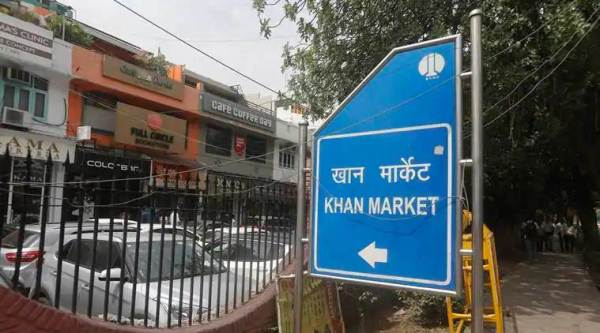
Khan Market changed after the aura of “refugee spaces” wore off. Nearby markets such as Meherchand Market, Lodhi Colony Market and Khanna Market in New Delhi catered to different groups of refugees but were all housed within a radius of 2-3 kilometers from the other by Meherchand Khanna, the Union minister looking after refugee rehabilitation after Partition. What has become the upwardly mobile Meherchand Market used to be largely for tailors whose claim to fame was the ability to turn frayed suits inside out to make them look new.
Khan market was affordable for the likes of us teenage girls who, in the 1960s would bicycle there for a low-cost ice cream. It became inaccessible after globalisation brought in foreign brands and elite businesses. It became a VIP area, with Levis taking over Bengal Sweets — and depriving us of gol gappas — and expensive spa products replacing the familiar chemist who knew what your shampoo preferences and monthly quota of medicines were. And with this change, the political and bureaucratic elite took over, joined in good numbers by the intellectual elite seminarists of the India International Centre and the India Habitat Centre. All these layers of VIPs knew each other and strutted around as if they owned the place. These privileged ones, including dynasts of various families, also frequented Taj Mansingh and Oberoi Hotels, and could be seen playing golf or wining and dining with businessmen or media honchos at these familiar watering holes where, cocooned in the warmth of mutual support and quid pro quos, they lived off the comfort of their closely held “Idea of India”.
Consequent to the general election results of 2019, these pleasure lovers are waking up to a different tune. Dynasty per se did not seem to be a problem till 2019, but Narendra Modi, who exclusively controlled the discourse during campaigning both in 2014 and 2019, cleverly ensured that aspiration and entitlement for the voter, particularly the youth, came wrapped in contempt for entitled dynasts. It wasn’t hard for the voter to see that all the opposition parties — the Congress, SP, Telugu Desam, JD(S), RJD, DMK, NCP, INLD, PDP and NC, the nephews in TMC and BSP — were all fully bloomed or emerging dynasties tightly controlled by the head of the party.
Congress dynasty defenders point out to father and son situations on the side of the NDA formation. However, so far these are only two-generational whereas the Congress starts from the first prime minister and let go of the Nehru-Gandhis only twice. Congress even showed the first signs of inducting the next generation at a later date, unless them being on the platform in UP was just a bit of “campaign tourism for kids” and not indoctrination.
Those who had controlled the narrative for so long reluctantly gave the BJP less than a majority, hoping for success of those foolish flurries of optic solidarity raised by the handholding of the Opposition on campaign platforms that did not extend to alliances — Chandrababu Naidu, Mamata Banerjee, Mayawati, Rahul Gandhi and even Arvind Kejriwal all periodically claiming to mobilise components of the Opposition. They planned a meeting in Delhi a day before the results to discuss their coalition. Yet, across Karnataka, Rajasthan, Jharkhand, Bihar and UP, Madhya Pradesh and other states voters could see that there was no consolidated opposition leader offered as an alternative who had the maturity, experience, decisiveness, oratory, charisma and most importantly, the ability to handle contending interests among themselves and across the country.
The Khan Market gang even started writing articles on the greater value of coalitions, and refused to see that the voter of aspirational India knew how short lived, fragile and contentious coalitions had been — the NDA 1 coalition being different because the top leadership of the BJP had a perfect understanding of how it had to work. Thinking citizens who were largely apolitical but nevertheless lifetime Congress voters wanted stability this time, said so quietly, and voted for Modi.
Narendra Modi is the catalyst who set off the remarkable transformation that was happening in the questioning minds of aspirational India. They too wanted entitlement of their own kind — to legislatures, to better facilities, health and living conditions and tools to access to a larger world. If a dynast in the campaign constantly messages that after my great grandfather, my grandmother, then my father and now I alone can be the prime minister, the manual labourer’s son will contrarily say, “I will not dig dirt; I want to become something better, like a chaiwala was able to.” Artisans and domestic workers are actually sending their children to study subjects like engineering, architecture, fashion design and law or making them entrepreneurs of small businesses. They do not want to face entitled obstructionists who use influence to get ahead.
Whether the accurate prediction before the results of 303 seats by Modi, Amit Shah and Piyush Goyal at different times stemmed from a realisation that the Khan Market arguments had lost their hold — among the many other factors in their favour — we may not know but entitlement was certainly turned on its head across the long campaign.
The writer is former president of the Samata Party
— This article first appeared in the June 14, 2019 print edition under the title ‘Khan Market blinkers’